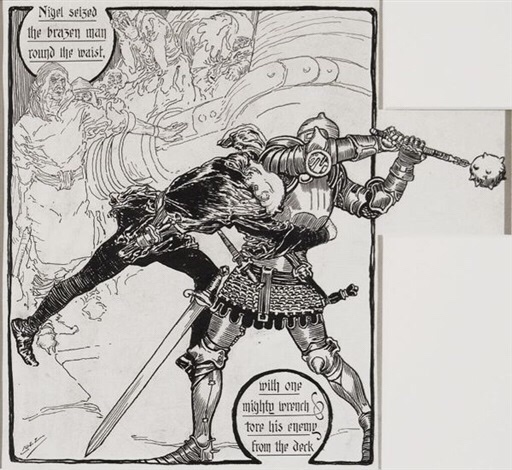
“Sir Nigel” Illustration by Joseph Clement Coll
One of the things taught Marvel UK’s Editorial Director Paul Neary and others have taught me down the years is to look beyond the work of the current “hot” artist and realise that their influences can help shape others. Paul, for example would often point to the art of Al Williamson for his Inking genius, at his best, particularly when it came to the Look of clothes on the human frame, but also his to detail a frame without detracting from its central action.
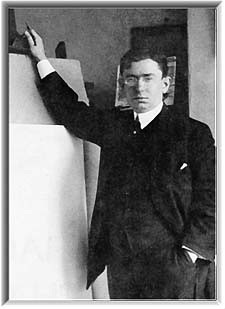
Joseph Clement Coll
In turn, of course, the greats Paul admired were influenced by past generations of artist – and for Al, one of these was certainly the incredibly talented American artist Joseph Clement Coll.
An online discussion posting of an example of his work sold by Heritage Auctions prompted me “down the tubes” in search of more examples, only to discover that unlike contemporary newspaper artist Winsor McCay (the creator of “Little Neno”), his work is, in comparison, little documented and what has been collected features largely in quite expensive books.
Although his life was cut tragically short, Coll’s illustration work informed and influenced many who followed him, including Hal Foster.
Born in 1881, although Coll received no formal art training, he developed his talent at an early age, by studying the works of artists such as Edward Austin Abbey and Howard Pyle, and particularly those of Spanish artist Daniel Vierge.
His talent was such that he was taken on as an apprentice newspaper artist on the New York American at the age of 17, where he quickly learned the skills of a reporter and was sent to Chicago for more training. He returned to New York in 1901, where he worked on the newly-formed Sunday North American.
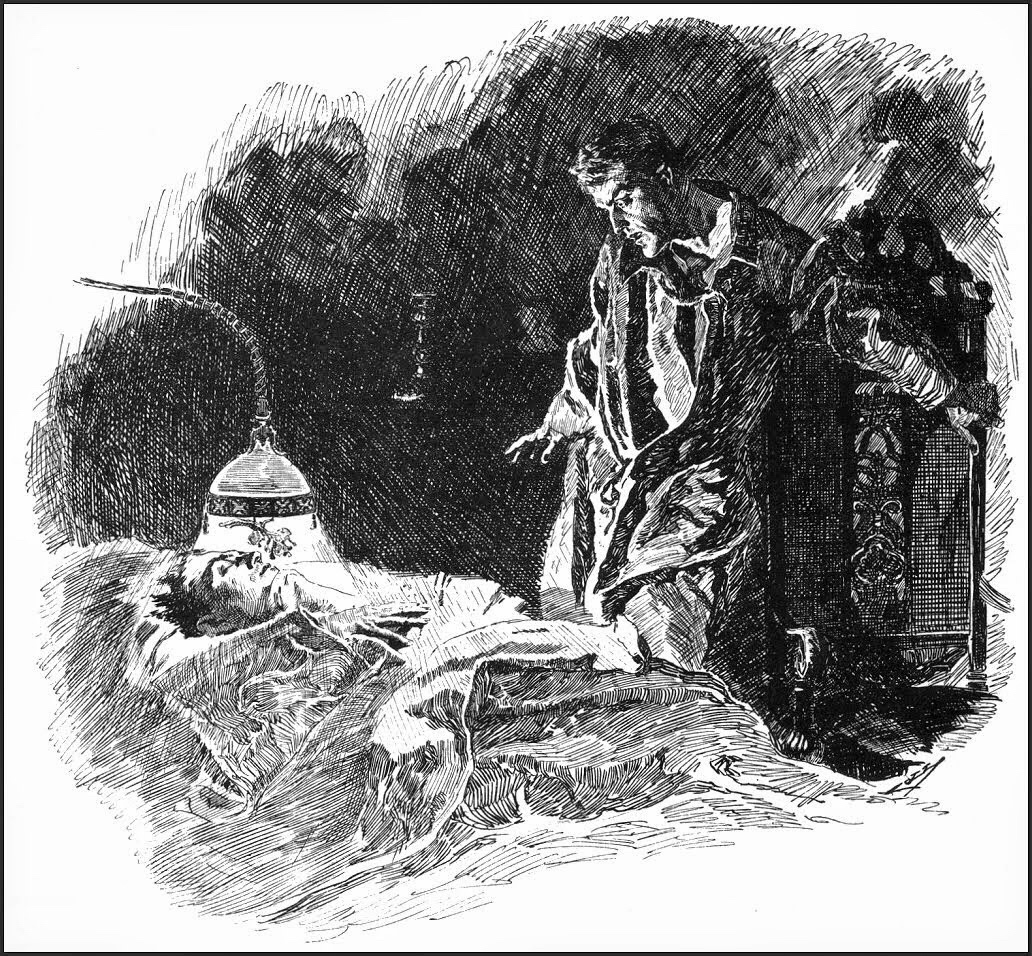
The editor of the paper saw his talent and rewarded it with challenging assignments to which he often contributed in the lettering and design.
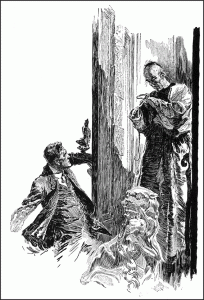
A visit to Fu Manchu by Joseph Clement Coll
It was Coll’s vivid imagination that would lead to book and magazine commissions for the exotic stories of authors like Author Conan Doyle and Sax Rohmer.
Some of his best-known work is on “Sir Nigel” – a suite of illustrations published in 1905 – 1906 for the serialized novel by Sir Arthur Conan Doyle published in the Sunday Magazine of Chicago’s Record-Herald, a daily newspaper published between 1901 and 1914. The Sunday edition sold over 200,000 copies at its height.
“Sir Nigel” is a series considered an influential precursor of Harold R. Foster’s celebrated Sunday comics feature, “Prince Valiant”.
Sadly, Coll died quite young, in 1921,the victim of appendicitis – but his legacy is remarkable, all the more so for being documented by only a handful of enthusiasts online.
“in 20 short years, defined the look of adventure illustration,” writes Jim Vadeboncoeur Jr in an appraisal of Coll’s work on his brilliant Illustrators web site.
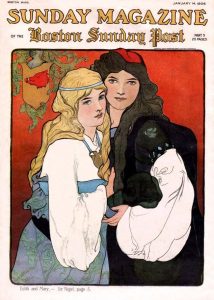 “The pulp magazines would be full of his admirers. Fu Manchu and the other Eastern menaces were drawn from his design. J.R. Flanagan and the others who succeeded him sported their debt and their admiration proudly.
“The pulp magazines would be full of his admirers. Fu Manchu and the other Eastern menaces were drawn from his design. J.R. Flanagan and the others who succeeded him sported their debt and their admiration proudly.
“When the pulps gave way to the comics, the next generation of fanatics discovered and learned from his pioneering work. Al Williamson, Roy Krenkel, Frank Frazetta, and hundreds more have felt the touch and ‘rightness’ of his magic.”
Two limited edition collections – The Art of Adventure, and Legacy in Line – have been published by Flesk Publications, but today a copy of either might set you back by over £100. But they come highly recommended by Greg Ruth over at Murky Colors.
(The Magic Pen of Joseph Clement Coll, published in 1978, the work of Walt Reed, is, unfortunately, similarly highly priced).
“For anyone looking to see how with a simple quill pen captures universes, this is your guy,” says Greg. “I keep the latter of the Flesk books always within arms reach of my drawing table and I always find something I never saw before in the work even after ten years of obsessive looking.”
My thanks to Ernesto Guevara for sending me down this particular rabbit hole, to redeiscover some incredible art from the turn of the last century. I hope you’ve enjoyed this journey, too.
Web Links
• Illustrators – An Appraisal by Jim Vadeboncoeur Jr
• Murky Colors: Masterworks – Joseph Clement Coll
• Art Contrarian: Joseph Clement Coll: Color Illustrations
• Art Contrarian: Joseph Clement Coll: Ink, Pen, and a Bit of Brush
• Joseph Clement Coll – Heritage Auctions Catalogue Search
• ArtNet: Joseph Clement Coll Artworks
• The Kelly Collection: Joseph Clement Coll
The Kelly Collection of American Illustration is a private collection dedicated to the acquisition, preservation, research and exhibition of Golden Age American illustration.
[amazon_link asins=’1517517265,0972375813,0891340092,0971271623,B00085O1IE,B000K8IBW6′ template=’ProductCarousel’ store=’downthetubes’ marketplace=’UK’ link_id=’a7ef333e-2b41-11e8-bce5-cd6f81119ec7′]
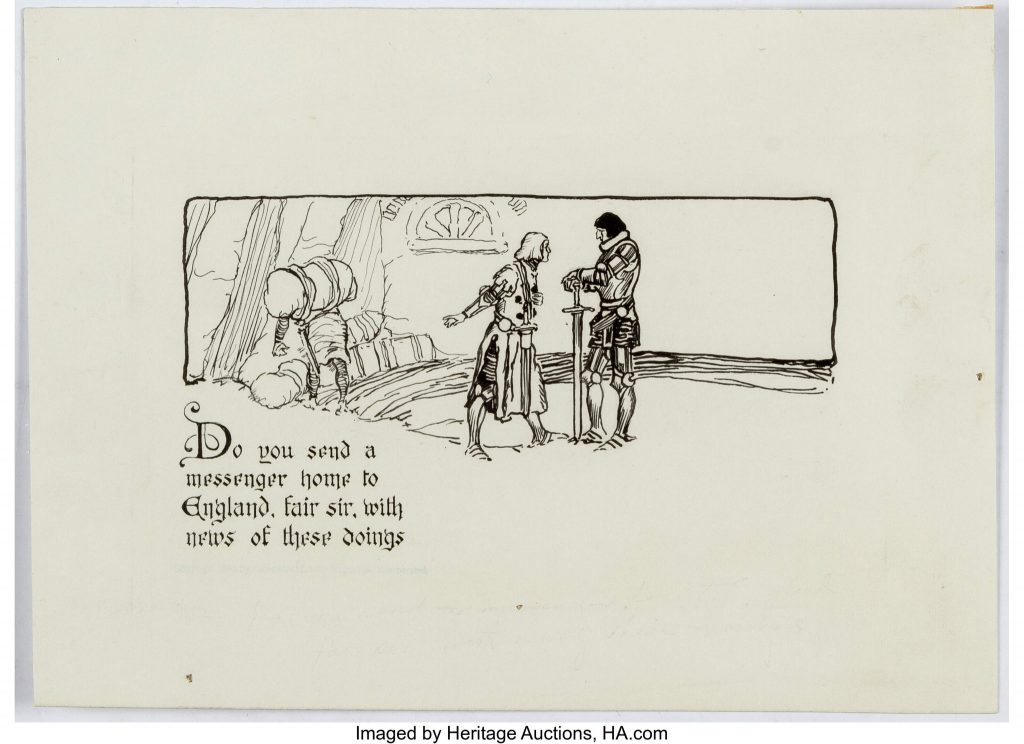
“Sir Nigel” Illustration by Joseph Clement Coll
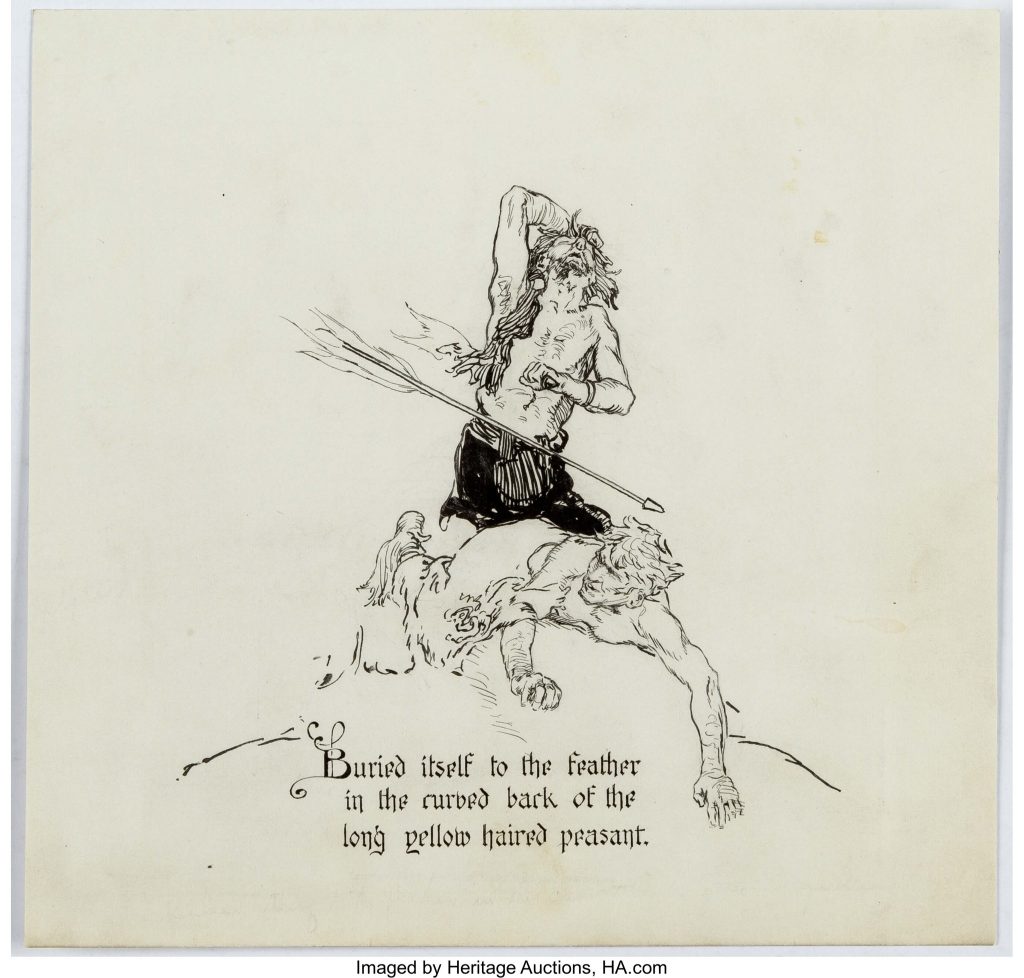
“Sir Nigel” Illustration by Joseph Clement Coll
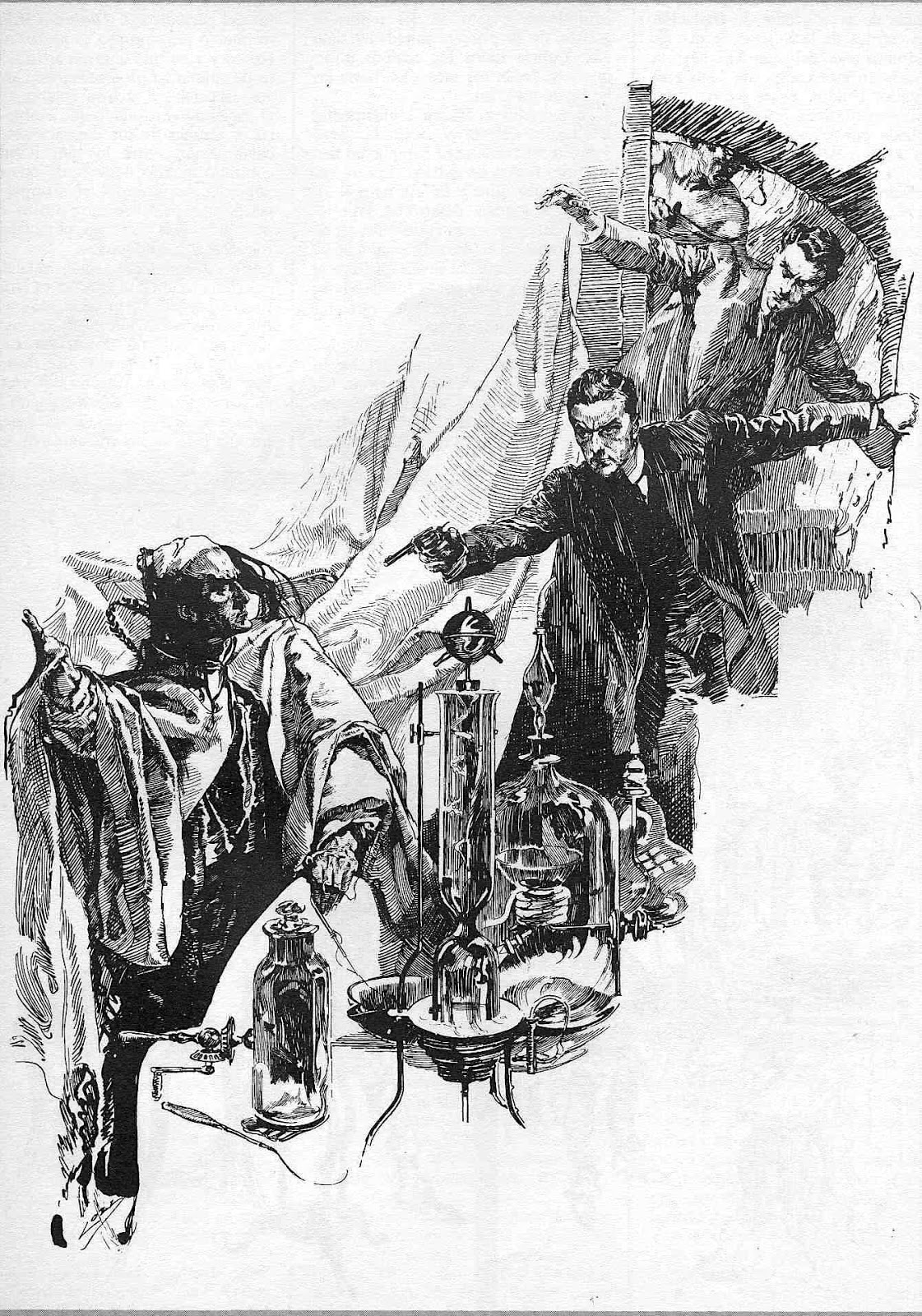
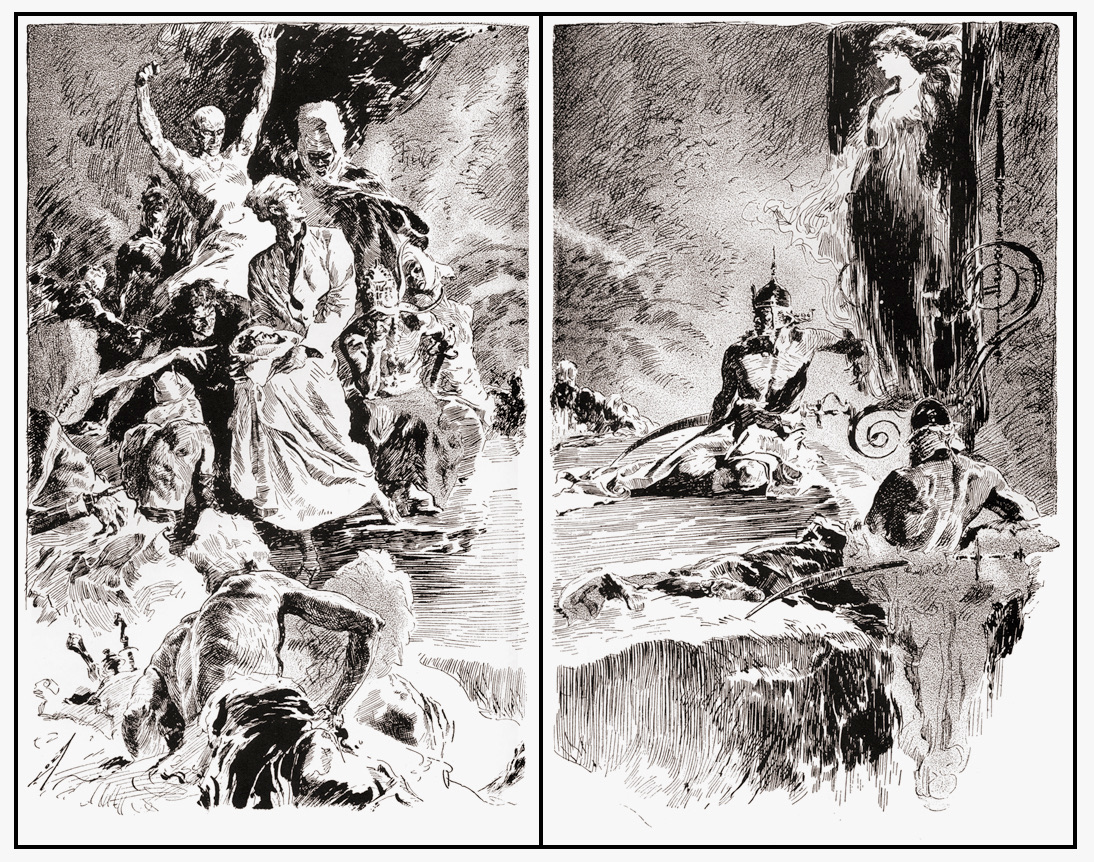
Art by Joseph Clement Coll auctioned in 2014 on behalf of Locus
[amazon_link asins=’1517517265,0972375813,0891340092,0971271623,B00085O1IE,B000K8IBW6′ template=’ProductCarousel’ store=’downthetubes’ marketplace=’UK’ link_id=’a7ef333e-2b41-11e8-bce5-cd6f81119ec7′]
The founder of downthetubes, which he established in 1998. John works as a comics and magazine editor, writer, and on promotional work for the Lakes International Comic Art Festival. He is currently editor of Star Trek Explorer, published by Titan – his third tour of duty on the title originally titled Star Trek Magazine.
Working in British comics publishing since the 1980s, his credits include editor of titles such as Doctor Who Magazine, Babylon 5 Magazine, and more. He also edited the comics anthology STRIP Magazine and edited several audio comics for ROK Comics. He has also edited several comic collections, including volumes of “Charley’s War” and “Dan Dare”.
He’s the writer of “Pilgrim: Secrets and Lies” for B7 Comics; “Crucible”, a creator-owned project with 2000AD artist Smuzz; and “Death Duty” and “Skow Dogs” with Dave Hailwood.
Categories: Art and Illustration, downthetubes News, Other Worlds
 Kevin O’Neill original “Torquemada”art up for auction
Kevin O’Neill original “Torquemada”art up for auction  Telos Publishing opens orders for The Fantastic Art of Ron Turner
Telos Publishing opens orders for The Fantastic Art of Ron Turner  Chris Foss: A Sci-Fi Journey Exhibition proves a hit for Art for Guernsey Gallery
Chris Foss: A Sci-Fi Journey Exhibition proves a hit for Art for Guernsey Gallery  Prince Valiant Artists illustrators Special #19 Limited Edition announced
Prince Valiant Artists illustrators Special #19 Limited Edition announced
Artist John Ridgway suggest that other artists whose work is well worth studying are John R. Neill, Willy Pogany, Arthur Rackham and the serious illustrations of Heath Robinson.
“Joseph Clement Coll was from the golden era of Great American Illustrators,” notes artist Adrian Salmon, “which also included other great pen men like Howard Chandler Christy, James Montgomery Flagg and Franklin Booth.
“Then there’s Howard Pyle, N.C. Wyeth and Heinrich Kley who all did beautiful pen work. They were fully rounded artists back then , able to paint , and draw with pen and ink with equal ability.”